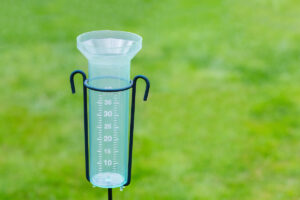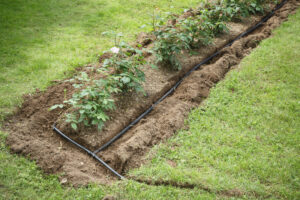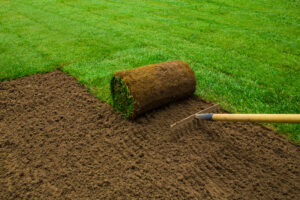Log in or create new account to save this product to your wishlist.
Watering your lawn: The Importance of your Garden Sprinkler
We all know that our lawns need water, but how much should we water, and how often? And is it easier to just use a garden sprinkler?
Latest articles
7 MIN 22 Jul How to keep your lawn in shape this summer 9 MIN 15 Jul Watering Your Garden: 10 Top Tips! 11 MIN 15 Jul Is Your Grass Type Right for your Garden? 11 MIN 10 Sep Create Your Low-Maintenance Garden – Tips and Ideas 11 MIN 08 Sep The Ultimate Guide to Choosing the Perfect Hedges for Your Garden 12 MIN 30 Aug The Top 20 Evergreen Climbers to Transform Your GardenOK, let’s start with the million-dollar question: does my lawn REALLY need watering? Surely it rains enough in the UK to sustain the health and vitality of my grass? And do I need a garden sprinkler?
And – yes – we do get a fair amount of precipitation in the UK. Our climate is described as “temperate”, which means we get cool, wet winters and warm, wet summers.
But, one way or another, the climate is changing. And we’re getting longer periods of warm weather with no rain, followed by warm weather and monsoon-like downpours that cause floods and all manner of disasters.
So, if your grass is less green than usual – or even yellow – it’s a good sign it needs a drink. But when, how much, and how often should you irrigate your lawn.
That’s why you’re here.
Why do we need to water our lawns manually?
A healthy lawn needs a robust root system, protecting it from drought and disease. A well-watered lawn has deep roots, making the grass more resistant to periods of drought.
So, if your lawn is a rich, deep green colour, the moisture level is probably OK.
But the tipping point is a narrow margin – if the blades become dull or turn yellow, it’s a sure sign it needs more water. And left for long enough, the grass will wilt, and the roots will die, creating a patchy lawn, which becomes a fertile environment for weeds.
Patches in your lawn provide the ideal conditions for your once beautiful lawn to become home to a wide range of invasive, ugly weeds.
Bad times.
Therefore:
Water at the first sign of dehydration. Even better still, prevent dehydration in the first place by using a sprinkler or a hose to regularly water your lawn.
The Best Time of Day to Water Your Lawn
In short, the morning is the best time to water your lawn.
The sun is low in the sky during the early morning, providing valuable time for the water to soak into the soil. If you leave it later, the sun will be stronger and the water evaporates, failing to penetrate the soil. And probably more importantly, exposing wet grass to the midday sun is likely to scorch or burn the leaves.
So, early morning is best, even though watering in the evening might feel like a good option.
Beware; it’s not!
If you water in the evening, your grass is likely to remain wet throughout the night – and that’s the perfect condition for fungi and disease. And you don’t want that.
Water in the morning
Water in the morning so that the water can soak deep into the soil.
Your soil type determines how long to run your garden sprinkler.
So, for how long should I water my garden, then?
Watering your garden using a garden sprinkler is probably the most time-efficient approach. However, calculating for how LONG to water depends on a range of variables – namely:
- Your soil type – is it clay or sandy?
- Your water pressure
- Your garden sprinkler (or hose pipe)
Everyone’s water pressure is going to be different – if you live at the bottom of the hill, it’s likely to be better than if you live at the top of the hill, for example.
So, in order to measure the length of time you need to run your sprinkler, rush off and grab yourself an old tuna tin.
Yes – an old, empty (and cleaned) tuna tin. We’ll be channeling the spirit of Blue Peter later in the article!
I have clay soil. How long should I run my garden sprinkler?
Clay soil is good at retaining water, so – in general – you shouldn’t need to use your garden sprinkler too often.
As a rough guide, if the temperature is around 20ºC, run your sprinkler for approximately 30 minutes.
However, if the ambient temperature is 25ºC, water for 80 minutes. Alternatively, run the garden sprinkler for 2 hours if it’s scorching to help prevent your clay soil from drying out and becoming hard.
Hard, dry clay soil becomes resistant to water. Liquid just sits on the surface and takes longer to penetrate the soil.
So, don’t let it dry out.
What about watering sandy soil?
Sandy soil drains very well, which is both a gift and a curse. Most plants don’t enjoy sitting in soggy earth – it suffocates the roots. So, sandy soil CAN be good for some plants.
On the other hand, sandy soil doesn’t hold onto moisture like clay soil, and too much water running through it washes away the nutrients that your plants need to thrive.
So, sandy soil requires additional watering (and more regular fertilising) than clay soil.
As a general rule, run your sprinkler for at least one hour if the ambient temperature is 20ºC, and do this several times a week. If the mercury rises higher still, double the sprinkling time per 5 degrees.
In a heatwave, sandy soil needs around 3 hours of watering. Do this every other day.
How much water does my lawn need?
Grass needs 2.5-4 cm of water every week in spring, summer and autumn to remain beautifully healthy and green.
But how do you know how much water the lawn is getting?
Use a rain gauge. (Grab that old tuna can – this is where it comes into play!)
Use a rain gauge

You can buy a rain gauge that measures how much rain your lawn receives. Or you make one from an old tuna can, which is roughly 2.5 cm deep. Make sure that the lid has been entirely disconnected.
Leave your rain gauge/tuna can in a clear, open spot either on or close to your lawn. If you collect 2.5-4 cm of rainwater every week, you are good; there’s no need to add more water.
But:
If no rain is expected, you’ll need to find out how quickly your garden sprinkler delivers 2.5-4cm of water. This will vary based on your water pressure and the model of your garden sprinkler.
How to calculate the efficacy of your garden sprinkler
The scientific approach to identifying how LONG to run your sprinkler is to set your rain gauge within the scope of your sprinkler and let the sprinkler run. Set a timer and keep an eye on your gauge – when it’s full to 2.5cm, stop your timer.
That’s how long it takes to deliver precisely 2.5cm of water.
You could use several rain gauges set at varying distances from your sprinkler to get an average.
However, when the temperature is higher than usual, your lawn may need between 3 and 4cm of water.
Use this table to help calculate the volume of water to use.
| Temperature | Frequency | Quantity (if there is no rain) |
| < 15ºC | – | – |
| 15ºc – 20ºC | 1x a week | 25mm |
| 20ºC – 25ºC | 1x a week | 30mm |
| 25ºC – 30ºC | 2x a week | 20mm (each time) |
| > 30ºC | 2x a week | 25mm |
Garden sprinkler or hosepipe?
You can water your lawn in two ways: manually or automatically.
We’ll explain the most commonly used tools for the job.
Watering with a garden hose

If you water with a hosepipe, keep an eye on how long you water.
Disperse the spray evenly across the lawn by waving the spout of the wand slowly from left to right (and back again). Make sure you cover the whole lawn, focusing on the areas that look the driest.
Use your rain gauge to measure the amount of water as you go.
Hosepipe watering is the hands-on approach but it can be time-consuming.
Watering with a garden sprinkler

A garden sprinkler waters your lawn evenly, without forming puddles, so that the water is evenly distributed.
Sprinklers are especially suitable for square and rectangular lawns and – depending on the nozzle and your water pressure – can have a decent range. For example, our impact sprinkler with stabilising awl or impact sprinkler with feet have a maximum range of around 25 metres.
A garden sprinkler does most of the work for you, but you need to remember to set it to run.
Automatic sprinkling
The easiest way to ensure that your lawn gets the water it needs is to use an automatic garden sprinkler that you set up, and it runs by itself.
So, when you go on holiday for two weeks, you won’t come home to a dead lawn!
Watering with a fixed garden sprinkler system

You can, of course, set up a permanent garden sprinkler system, with connecting pipes that are dug into the soil. You see this type of set-up in public gardens and the grounds of stately homes. This system often uses pop-up nozzles which rise when they’re sprinkling and sink below the surface of the lawn when they’re at rest.
If you’re opting for this setup, you’ll need to dig strips into your lawn for the water pipes and position the sprinklers at regular intervals across the garden.
Be extra careful when you scarify or mow your lawn with permanent sprinkler systems to make sure you don’t inadvertently cut through the water pipes below the surface of the lawn. To avoid this, set your sprinklers so that they pop up from the surface of the lawn and mark them with a flag – this way, you’ll know precisely where your popups are located, exercising extra care around those marked locations.
However, if you have a smaller garden, it’s easier to plump for the less permanent approach: connecting your sprinkler to your garden tap via a timer.
Watering with a drip hose

A drip hose provides water for your grass and plants in a particularly economical way. Compared to other sprinkler systems, you could save up to 70% of the water you’d otherwise use; if you’re on a water meter, that will make a considerable difference to your bill.
A drip hose (aka a “bleed hose”) is made from a porous material that’s designed to leak when water runs through the pipe. You dig your drip hose into the earth and cover it over with topsoil – using a pressure regulator to monitor water flow.
Connected to a timer, a drip hose can automatically provide super-efficient water delivery.
Watering AFTER fertilising your lawn
A lawn not only needs moisture but also requires nutrition in the form of fertilisers. Most high-quality fertilisers come in slow-release granules. These are sprinkled onto the lawn’s surface and are ready to release nutrients into the soil – activated by watering.
However:
Never fertilise when the grass is already wet – the grains will stick to the grass blades, which can cause leaf scorch.
TIP: A good watering strategy encourages your lawn’s roots to develop more deeply into the soil – encouraging better drought- and disease resistance.
Watering after sowing grass seed
Whether you’re laying grass seed for a brand new lawn or overseeding to encourage greater grass blade volume, you should water immediately after sowing. This helps the grass seed make contact with the soil – without soil contact, it won’t germinate.
Keep the soil moist for at least two weeks after sowing and continue for the following two weeks after germination to ensure optimal results.
However:
It’s better to water lightly four times a day than to water heavily once a day; otherwise, the grass seed could wash away.
Garden Sprinkler: Irrigating newly laid turf

Newly laid turf provides instant results – a brand new lawn in an afternoon. But for the sod to take root, you need to water daily for the first two weeks.
If the turf shows signs of dehydration, water it more regularly until it recovers – in the morning, afternoon, and evening.
Irrigating existing turf: developing a watering strategy
Overwatering your lawn makes the roots lazy: they remain shallow. You want the roots of your grass plants to seek the moisture deep within the soil. So, it’s essential to create a watering schedule that encourages root growth.
Deeper roots make your lawn more resistant to drought because they feed on the moisture that sits deeply underneath the soil surface.
So:
Don’t water every day.
Water according to the table above. In general, it’s better to water once or twice a week as that will encourage the grass’s roots to burrow more deeply into the soil, searching for water.
Don’t water when rain is scheduled. Let nature do the work for you.
Watering your lawn during a drought
We’re no strangers to hosepipe bans in the UK. And as climate change takes hold, it’s becoming more and more important to conserve water.
If you’re looking for a greener way of irrigating your lawn, check out our great article about installing and using water butts that collect rainwater.
Remember: If the day has been sweltering (above 30ºC), water very lightly at the end of the afternoon to cool your lawn. Just make sure it has time to dry for the night!
Ready to get started? Or do you need more information?
Check out our list of great articles and blogs for tons of expert information about grass seed, fertilisers, scarifying products and accessories for the garden.
If you have any questions regarding this article, you can always email us; we’re always happy to help.
Leave a comment
Your answer will be displayed on the site and the interested party will be notified by email.
Leave a comment
Have a question or want to share your experience? Leave us a comment.
Read more
The best tips and tricks for a lush green lawn
 Scarifying Kit
All products after scarifying | Quickly restores the lawn after scarifying | Outsmart weeds quickly with the use of this kit
From: € 39.99
Scarifying Kit
All products after scarifying | Quickly restores the lawn after scarifying | Outsmart weeds quickly with the use of this kit
From: € 39.99
 Spring Lawn Care Kit
MOOWY’s choice for the spring | Quick recovery of your lawn after winter | A strong lawn prevents weeds
From: € 25.99
Spring Lawn Care Kit
MOOWY’s choice for the spring | Quick recovery of your lawn after winter | A strong lawn prevents weeds
From: € 25.99
 Long Lasting Lawn Fertiliser
Effective for 90 days | See results in 14 days! | Suitable for all types of grass and soil
From: € 13.99
Long Lasting Lawn Fertiliser
Effective for 90 days | See results in 14 days! | Suitable for all types of grass and soil
From: € 13.99
Do you want a lawn calendar?
🌱 All important maintenance moments for your lawn during the year. Leave your email and we will send you the lawn calendar for free.
Enter your email
Receive the lawn calendar in the mail
Enjoy a green lawn all year round!









Comments (0)
There are no comments yet. Well then, what are you waiting for to
Be the first to write your comment!inaugurate this pretty page?
Do you have some comments?